Best D3.js Resources to Buy in December 2025
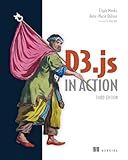
D3.js in Action, Third Edition



Learn D3.js: Create interactive data-driven visualizations for the web with the D3.js library


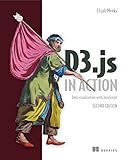
D3.js in Action: Data visualization with JavaScript


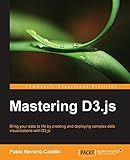
Mastering D3.js


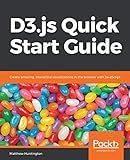
D3.js Quick Start Guide: Create amazing, interactive visualizations in the browser with JavaScript



Integrating D3.js with React: Learn to Bring Data Visualization to Life


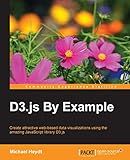
D3.js By Example


To create a definition list using d3.js (Data-Driven Documents), you need to follow these steps:
-
Start by creating an HTML element to contain your definition list. For example, you can create a
element:
- In your JavaScript code, select the definition list element using d3.js:
const definitionList = d3.select("#definition-list");
- Prepare your data as an array of objects, where each object represents a term and its corresponding definition. For example:
const data = [ { term: "Term 1", definition: "Definition 1" }, { term: "Term 2", definition: "Definition 2" }, { term: "Term 3", definition: "Definition 3" }, // ... more data ];
- Bind your data to the definition list using d3.js's data() function:
const definitions = definitionList.selectAll("div") .data(data) .enter() .append("div");
- Add the term and definition elements for each data item using d3.js's append() function:
definitions.append("dt") .text(d => d.term);
definitions.append("dd") .text(d => d.definition);
By following these steps, you can create a dynamically generated definition list using d3.js. Feel free to modify the code according to your specific requirements, like using different HTML elements or styling.
What is the default styling of a definition list in d3.js?
In D3.js, the default styling of a definition list (dl) is determined by the default CSS styles applied to the dl, dt, and dd elements. These default styles may vary slightly depending on the web browser being used.
By default, dl elements have a display value of "block" and a margin value of "1em 0". The dt elements have a display value of "block" and a margin value of "0" along with a bold font-weight. The dd elements have a display value of "block" and a margin value of "0 0 1em" to create a vertical spacing between each item.
However, it is important to note that D3.js does not provide any built-in styling for the definition lists. The styling of the dl, dt, and dd elements can be further customized or overridden by applying your own CSS styles to these elements.
How to style individual terms or definitions differently in a d3.js definition list?
To style individual terms or definitions differently in a d3.js definition list, you can use the classed function in combination with CSS classes. The classed function can be used to conditionally add or remove a class to an element based on data.
Here is an example of how you can style individual terms or definitions differently in a d3.js definition list:
- First, define your data with terms and definitions. For example:
var data = [ { term: "Term 1", definition: "Definition 1" }, { term: "Term 2", definition: "Definition 2" } ];
- Create a definition list (dl) using D3.js:
var dl = d3.select("#myList") .append("dl") .attr("class", "my-definition-list");
- Bind the data to the definition list:
var items = dl.selectAll("div") .data(data) .enter() .append("div");
- For each item in the data, add the term (dt) and definition (dd) elements to the definition list:
items.append("dt") .text(function(d) { return d.term; });
items.append("dd") .text(function(d) { return d.definition; });
- Finally, use the classed function to conditionally apply different CSS classes to each term or definition:
items.select("dt") .classed("term-highlight", function(d, i) { return i === 0; // Apply the "term-highlight" class to the first term only });
items.select("dd") .classed("definition-bold", function(d, i) { return i === 1; // Apply the "definition-bold" class to the second definition only });
In this example, the term-highlight class is only applied to the first term, and the definition-bold class is only applied to the second definition. You can define these classes in your CSS file to style the terms or definitions differently as desired.
.term-highlight { background-color: yellow; }
.definition-bold { font-weight: bold; }
What is the syntax for creating a definition list in d3.js?
In D3.js, there is no specific syntax for creating a definition list. However, you can use D3.js to generate the required HTML elements for a definition list.
Here is an example of how you can create a definition list using D3.js:
// Sample data for the definition list var data = [ { term: "Term 1", definition: "Definition 1" }, { term: "Term 2", definition: "Definition 2" }, { term: "Term 3", definition: "Definition 3" } ];
// Select the parent container (e.g., ) var container = d3.select("body") .append("div");
// Create the definition list using D3.js var dl = container.append("dl");
// Create a element for each term var dt = dl.selectAll("dt") .data(data) .enter() .append("dt") .text(function(d) { return d.term; });
// Create a element for each definition var dd = dl.selectAll("dd") .data(data) .enter() .append("dd") .text(function(d) { return d.definition; });
This code will create a definition list (dl) with the provided terms and definitions from the data array. Each term is represented by a <dt> tag, and each definition is represented by a <dd> tag.
